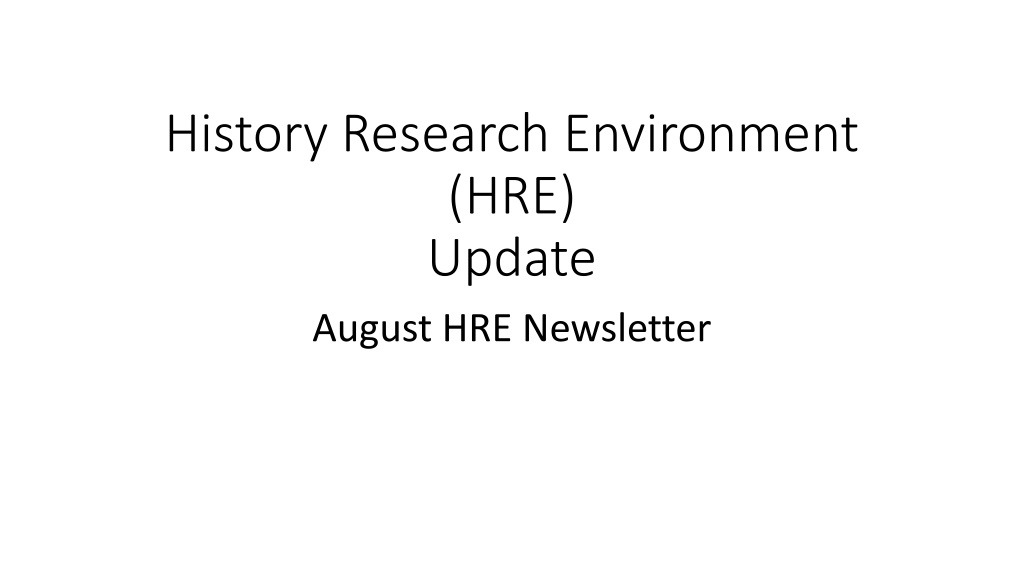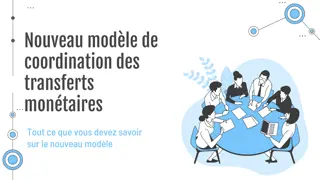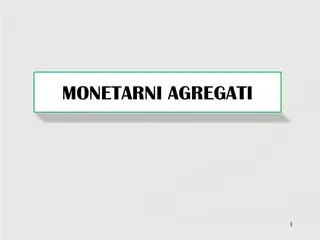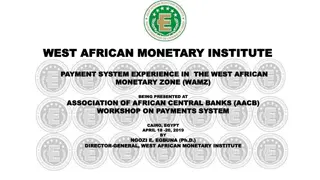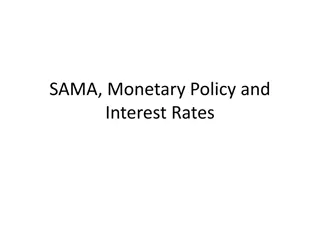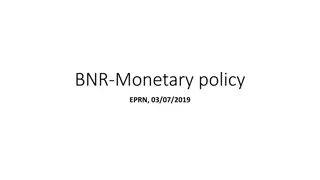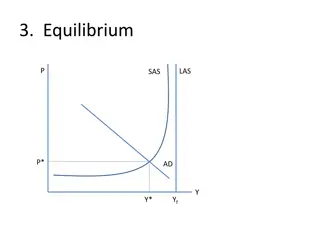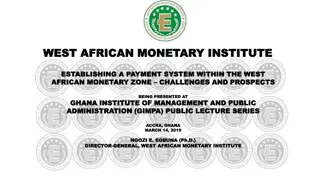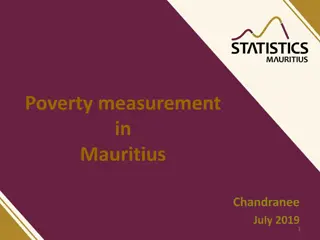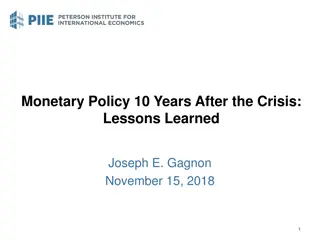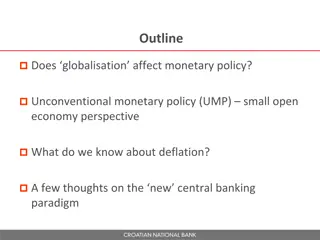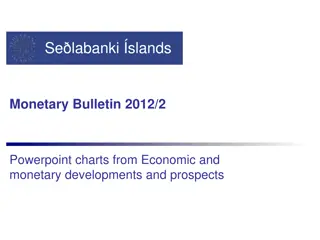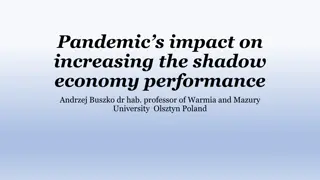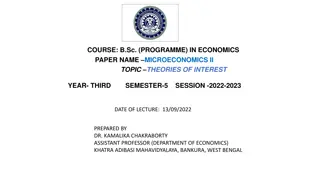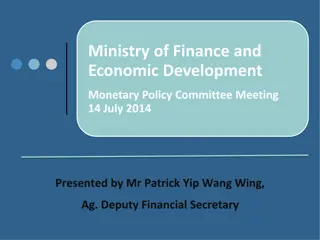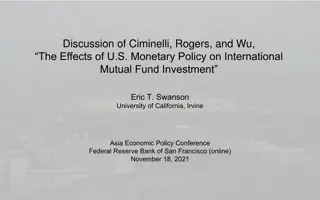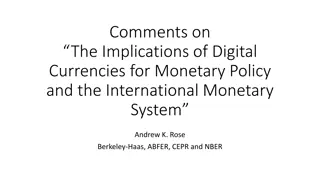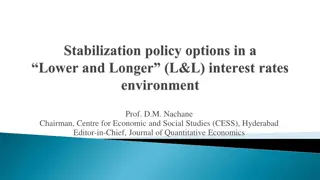The State of the Economy and Monetary Theory
A deep dive into the state of the U.S. economy, discussing Austrian monetary theory, government manipulation of money and credit, unemployment, inflation, and concerns about potential economic crises. Explore the impact of quantitative easing, credit bubbles, and the role of the Federal Reserve in the economy.
Uploaded on Feb 21, 2025 | 0 Views
Download Presentation

Please find below an Image/Link to download the presentation.
The content on the website is provided AS IS for your information and personal use only. It may not be sold, licensed, or shared on other websites without obtaining consent from the author.If you encounter any issues during the download, it is possible that the publisher has removed the file from their server.
You are allowed to download the files provided on this website for personal or commercial use, subject to the condition that they are used lawfully. All files are the property of their respective owners.
The content on the website is provided AS IS for your information and personal use only. It may not be sold, licensed, or shared on other websites without obtaining consent from the author.
E N D
Presentation Transcript
History Research Environment (HRE) Update August HRE Newsletter
HRE Status Reviewed the HRE design to ensure the revised specification properly achieves the initial HRE objectives Found several common changes to simplify HRE internals requires less code to be built and maintained within HRE This commonality enables HRE to have more flexibility which is a major benefit to the User Identified and currently testing several Open Source packages to embed within HRE to perform useful actions, thus reducing new code that built from scratch Very important that HRE be efficient, flexible, and easy to maintain
HRE Progress (mid-summer) In April 2017, HRE went live on GitHub the world's leading software development platform and version control repository. Outline of the HRE projects aims placed there Loaded almost the complete specifications for HRE up to version 0.3, and a bit beyond over 130 architectural and application specification documents Thus the full scope of HRE s design is visible to developers In June 2017, many documents upgraded with more detail https://github.com/History-Research-Environment/HRE--History- Research-Environment
HRE Progress (early August) Taking longer than originally predicted Although stalled , it is now proceeding at a faster pace This enabled the design to be significantly simpler and more areas of common coding, leading to less code Much work now in parallel HRE Architecture explicitly incorporates plugins these can be created by others Accessing online data sources is a matter of suitable plugins Access to online data within HRE is *NOT* excluded Objective of Meeting the replacement of TMG comes first
HRE Features Dates in HRE Genetic data related to children Selecting biological, legal, and social parents Import and Export of definitions Creating timelines from already entered events Plugins can be developed by others Accessing online data sources Prime objective: import TMG Projects and continue expected features for that data
Dates in HRE Import TMG dates with same qualifiers for date ranges and expected sorting and comparison. Julian calendar date conversion to the Gregorian calendar for comparison values will be Location Dependent (See https://en.wikipedia.org/wiki/Julian_calendar#From_Julian_to_Grego rian) Beginning of year can be set to be Location Dependent (unlike TMG) Other calendar conversions can be included HRE dates have extended time precision to one second (if required) HRE dates to include BCE (Before Christian Era) dates to -99,999 years
Genetic data related to children Change in Parents Reproductive medicine has changed (use of egg donors and sperm donors, surrogate birth mothers, and mitochondria exchange) Thus marking a single male and female parent is not sufficient HRE provides separate primary settings for these to be recorded and provides separate primary markers for each of: sperm source male egg source female birth mother auxiliary mitochondria female By default, In normal births, biological father will be marked as the sperm donor; biological birth mother will be marked as the primary egg donor and mitochondria supplier
Selecting Biological, Legal, and Social parents Recording significant adults for their familial function rather than biological connection For some reporting purposes, it is very important that the appropriate parenting person is selected HRE provides for more than one person to be a parent This overcomes the problem of children with same sex parents And for those whose biological parent is known, but where the function of parent was performed by an unrelated person
Import and Export of definitions Definitions can be exported to an XML file, such as Tag types, Source types, Name styles, Screen layouts, etc. That XML file can be imported into another project Enables interchange of definitions between users.
Creating timelines from already entered events Timeline is list of Events or Tasks Timeline has a unique name so it can be selected for inclusion in a display or report Imported TMG timelines will retain their original TMG name, and be converted into this form To create a new Timeline within HRE, a user creates a Head Entity with a user-provided unique name then may select from already entered Events or Tasks as an entry in this timeline Thus Timeline entries can have Citations and Sources
TMG Canberra weekend April 2017 In April 2017 Robin Lamacraft and Don Ferguson travelled to Canberra, Australia Attended a TMG Weekend which is an annual event hosted by the combined Canberra and Sydney TMG User Groups Robin and Don presented HRE s aims and directions and conducted a brief survey of attendees thoughts on which elements of TMG they regarded as good (and bad) and what they thought were requirements for any TMG replacement Details of the survey are at the end of the newsletter for those who are interested
Call for Volunteers Newsletter and Mailing List Management Intend to improve the quality and frequency of HRE News by use of a more sophisticated mailout tool to advise all on our mailing list of the availability of a new newsletter Manage the Mailing List Distribute HRE Newsletter messages via an HRE email address Will regularly schedule HRE News, with one update per quarter or more often as needed Person s commitment is sporadic and should not be overly time- consuming after they have well organized
Call for Volunteers Contributor Liaison manage and combine volunteer code contributions Manage Acknowledge contributions Respond to Forward queries to appropriate HRE person Should have a technology or service provision background Good organizational and communication skills Prior knowledge of TMG is not a requirement Sends messages out via an HRE email address
Call for Volunteers Interested in helping out with Newsletter and Mailing List Management? Send an email to Paquita Lamacraft (paquita.lamacraft@archerbg.com) Interested in helping out with Volunteer Code Contributions? Send an email to Don Ferguson (dhferguson@iinet.net.au) Do you have a query or suggestion about any aspect of HRE s design? Send send an email to Robin Lamacraft (robin.lamacraft@internode.on.net)
